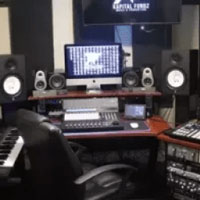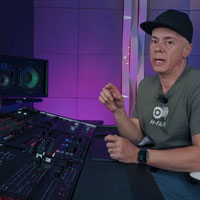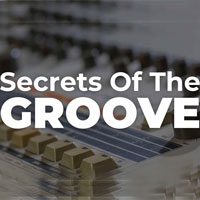Bassgorilla How To Mix Your Low End
|  |
Bassgorilla How To Mix Your Low End [DVD Tutorial]
Mix Your Low End With Confidence To Get A Better Quality Mix
Brought to you by Bass Gorilla, this course takes the mystery and frustration out of mixing the low end. Over 145 minutes of instructional videos simplifies the problems that every producer faces and gives you practical skills to overcome them.
Knowing how to make the bass end of a track work is crucial to almost every genre of electronic music. If you want to establish a compelling groove you have to learn the difference between what makes a sick pumping bass that complements your beats and what’s just overkill.
Hi I’m Luke Ward of BassGorilla.com in this easy to follow course we’ll create a new bass-heavy track from scratch while you learn everything you need to know to start getting your bass where you want it. The course is divided into 14 videos so you can watch and learn at your own pace.
Too often when you’re struggling with the low end you’ll hear criticisms like it’s ‘too muddy’, ‘too deep’, ‘too boxy’, or it’s ‘ill-defined’, ‘too quiet’ or ‘doesn’t punch through the mix’. Rather than listening to such vague complaints, get the right tips and techniques to identify and fix the problem.
Stop Trying To Guess How To Mix Your Bass, Sub Bass, Kicks & Snares
1. How to mix your kick and snare
Getting the kick and the snare to really punch through your mix starts with the kick and snare sounds themselves. In this video I’ll give you some useful tips on how to give your kick and snare the level of punch and fullness that they will need to drive your track forward.
2. Creating a Reese bass
Learn how to make a simple Reece bass that we will later be using as the main bass sound in our track – what we call the ‘mid-range bass’. I will make it using NI Massive.
3. Writing the bassline
You’ll see me write a bassline from scratch that fits well with the style of music we are writing. You’ll see how I start off simple and eventually add more groove to the rhythm of the bassline.
4. Making the sub bass
I’ll show you my approach to making a solid sub that can be heard clearly on both large and smaller sound systems.
Sections 5 – 8: Levels and EQing Bass
5. How to EQ the mid-bass
This lesson is very important, as it will give you the knowledge you need to make sure your bass sounds well balanced and has enough presence in your overall mix.
6. Setting levels of each element
Here I will show you how to go about setting levels from the ground up, and provide you with a rough guideline on what kind of levels tend to work well for high energy electronic music.
7. Using distortion to add more harmonics to your bass
Subtle amounts of distortion can help to add extra harmonics to your mid-range bass, making it fuller and sound cleaner in your mix. It might seem strange that adding distortion actually makes a sound seem cleaner, but you will see it demonstrated here.
8. How to use mid-side EQ to control the stereo image of your bass
You’ll see how your EQ can be used in mid-side mode to reduce the stereo spread in the lower frequencies of your mid range bass, while increasing the stereo effect in the higher frequencies to make it sit better in the mix.
9. Using multiband compression on your low-mid frequencies
This is a tip that will make a huge difference to the overall feel of your track, and it is demonstrated in this course using FabFilter Pro-MB (but there are many alternative vst plugins you could use). This helps to control the low-mid region of frequencies in your mid-range bass, making it sit better in the mix whenever those unpleasant frequencies rise up all of a sudden when certain notes are triggered in the baseline.
10. Tuning your kick to the key of your song
Here I’ll show you how to tune your kick so that it sits well in your mix with the sub bass and other elements.
Sections 11 – 14 – Compression Percussion
11. Using sidechain compression
Here we’ll take a close look at the best side chain compression settings to use for a successful side chaining effect.
12. An alternative to sidechain compression
In this video, I’ll reveal my favourite way to control how your kick and snare interact with your basses. This method ensures your bassline melodies can be heard clearly without being jeopardized by extreme side chain compression – an all too familiar reason your bassline melody fails to come through clearly and be heard.
13. Gentle compression and reverb on your mid bass
This lesson looks at how to process your mid range bass in a way that will give it more space, but still be at the front of your mix and still keep a good amount of natural movement, keeping its naturalness and life as it breathes with the other sounds in your track.
14. Hats and percussion in your mix
In this lesson, I’ll show you some ideas for processing your hi hats and other percussion sounds with your kick and snare.
What you will learn in this course
The ‘How To Mix Low End’ course will help you overcome one of the most challenge parts of crafting a high quality mix.
Have you given mixing one of your tracks your best shot, only to find that:
- The side chain compressor stops the baseline from being heard clearly or as it was intended to sound?
- The elements in the low end don’t gel well together?
- The sub bass can’t be heard clearly?
- The mid-range bass sounds unbalanced and difficult to listen to?
- The kick and snare aren’t punching through the mix well enough? or
- The mix sounds lifeless, dull and flat?
These are just a few common examples of the ways producers struggle trying to mix down the low end elements of a track.
You may buy Bassgorilla How To Mix Your Low End or download it from our website.
This product was released on 27 Sep 2015. Please check compatibility with your hardware and O/S.
Reviews
Write a Review
From: Your Review: Rating: |









![5 tips for a better EDM mix [DVD] 5 tips for a better EDM mix [DVD]](/images/Echo-Sound-Works-5-Tips-for-a-Better-Mix.jpg)

